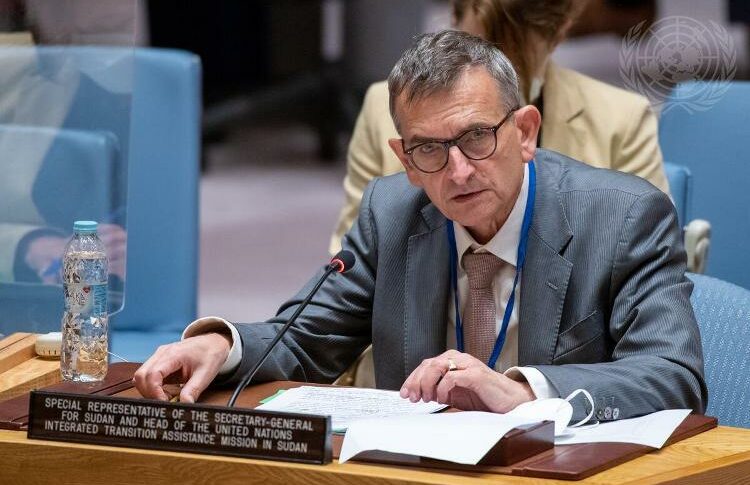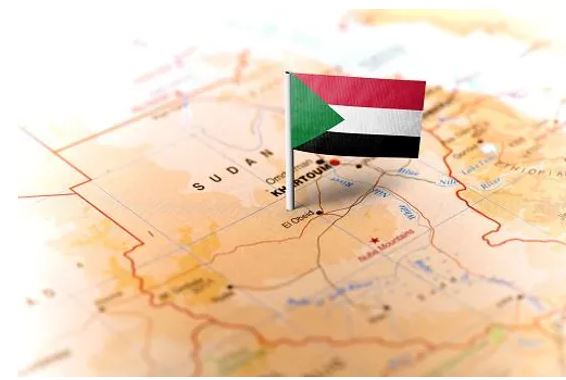Widad Almahboub: One Of Most Notable World Scientists And Astrophysicists
27 January, 2019
KHARTOUM (Sudanow) - Numerous documented achievements of Sudanese individuals in international forums stand as stark evidence that Sudanese cadres, of varied professions and specializations, have a genetic gist and capacity to excel, particularly within convenient surroundings.
One excellent example of competent Sudanese cadres is Sudanese scientist and astrophysicist professor Widad Ibrahim Almahboub who has been featured on the international “Who’s Who” list as one of the most notable world scientists and astrophysicists. Prof. Widad Almahboub has proved herself as a distinguished and competent scholar and scientist in her field. She has been lauded by local and international media channels as a remarkable astrophysics and applied mathematics achiever.
Professor Widad Elmahboub works as professor of applied mathematics in Hampton University at the State of Virginia in the United States of America. She also serves as team chair of the Hampton University’s Research Center of Earth, Space and GIS Analysis (RCESG) which hosts a number of hi-tech super computers operating on hyper-spectral data systems to classify satellite viewed targets using hyper-spectral imaging techniques. The center is co-funded by NASA and US Defense Department.
Professor Almahboub also mentors undergraduate students, as well as supervises graduate students on different master and doctorate research endeavors and theses in applied mathematics and astrophysics fields.
Since a very early age, while at elementary and secondary school level in her hometown of Omdurman, Widad was distinguished as a brilliant science and mathematics geek. She used to sit for hours, during her leisure time, at the then American Cultural Center in Khartoum reading and absorbing scientific journals and magazines.
Having finished her college studies in applied mathematics and astrophysics in Sudan and Egypt, Widad was granted an academic scholarship in 1988 by the Sudanese National Council for Research to proceed for further studies in the Netherlands.
In the following year 1989, Widad moved to the United States to conduct further studies in her field of specialization where she was awarded a master degree in engineering physics by Wisconsin-Madison University, followed by a doctorate degree in astrophysical engineering from the same university. At that time, she was the first American woman of Sudanese and Arab descent to be awarded such high scientific and academic ranking.


Prof. Widad started her scientific career as a professor of astrophysics and remote sensing systems at Hampton University. Then she moved on to the research and analysis of planetary components at NASA, where she made way up the academic and scientific career ladder to her present position as team chair.
In a statement to some local and international media channels, Prof. Widad recounted some of her most notable scientific achievements in the field of astrophysics when she said that in her present endeavor, the principle objective was to ascertain the presence of water and minerals on Mars through the development of data gathering infrastructure techniques and accurate analysis and remote sensing interpretation of satellite and space ships incoming data. Prof. Widad explained that the main target of her work was to enhance the accuracy of satellite-based remote sensing imaging and data.
As team chair of the Hampton University’s Research Center of Earth, Space and GIS Analysis (RCESG, Prof. Widad supervises and works on a number of super computers that operate on analyzing hyper-spectral data to classify and refine satellite-based imaging of viewed targets using hyper-spectral imaging techniques. The center is co-funded by NASA and US Defense Department. One main objective of the center is to assess the feasibility of identifying water and minerals on Mars using remote sense imaging and data.
Prof. Widad stated that through advanced processing, evaluation and quality improvement of spectral analysis of Mars data through the minimizing of contamination effects, remote sensing images showed the presence of iron oxide, calcium oxide and magnesium oxide leading to the conclusion that there was presence of water on Mars, which was a clear indication that there existed some type of life on Mars some long time ago. As to the question how such life came to an end, Prof. Widad Almahboub said that the answer was still open-ended, as many factors could have presumably contributed to the extinction of life on Mars such as the occurrence of a cosmic catastrophe.
As part of a NASA-funded research program on astrophysics, Prof. Almahboub has introduced a highly accurate computer-simulated mathematical model that consists of two concepts to derive scattering co-efficient and path radiance per pixel, followed by the implementation of the algorithm and atmospheric correction method which enabled scientists and astrophysicists to obtain much more accurate and refined satellite images of Mars surface.
In recognition of her efforts, Prof. Widad has been granted a number of scientific awards by various academic and scientific institutions such as NASA and the Mathematical Association of America.
Prof. Widad is also active member of the steering committee of HU Cloud-Aerosol Lidar and Infrared Pathfinder satellites “CALIPSO” and “”AIM”. In addition to space and planetary exploration, the mission of these two satellites also aims at discovering earth natural underground wealth resources as well as determining underground water basins and reservoirs on Planet Earth.
Part of Prof. Widad’s scientific endeavors also focuses on the use of advanced astrophysics and remote sensing technologies to study the components of deep layers of Planet Earth in a much more detailed method.
Prof. Widad has authored, co-authored and edited many articles in scientific journals and periodicals on remote sensing imaging technology, spectroscopy and simulated mathematical modeling.
Commenting on Sudan’s future potential, Prof. Widad said that it was high time that Sudan should work to utilize and employ modern astrophysics and remote sensing technologies in exploring and discovering its large underground and surface natural wealth expressing her will and readiness to help in this field, if required, by providing a free simulated model plan for this purpose, especially that Sudan had already established long time ago, in cooperation with the FAO, a remote sensing research center that is still active and functional.
E N D
IN/AS









Comment
Afaf Mohammad
09 January, 2021Amazing article, but provide us more about her personal life
Salah
28 February, 2021Latest book of professor Widdad
Widad MUSTAFA EL HADI
31 July, 2021We are so proud of you Prof. Widad I have always dreamt of being an specialist of astrophysics but I have been so bad at mathematics! Yes, as you have said brains are more or less adapted to different types of knowledge. Your talk is fascinating linking science to the holly Coran ! amazing indeed Would be so happy to meet you one day Widad Mustafa El Hadi University of Lille – France
Widad MUSTAFA EL HADI
31 July, 2021I am interested in Classification of Knowledge and your publications are amazing for understanding the Three Kingdoms: Discovering, Classifying and Interpreting Astronomical Objects, so exciting ! Widad